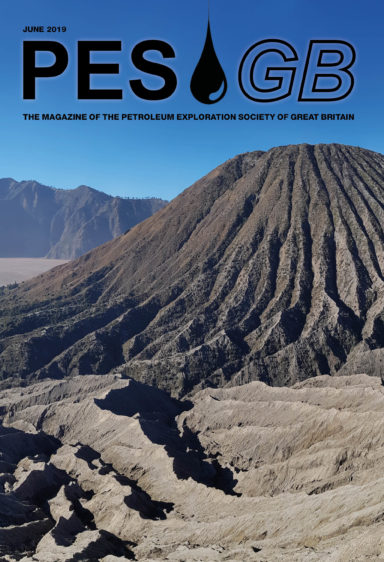PESGB June 2019
Plus much more inside
 The UKCS, still attracting investment…
The UKCS, still attracting investment…
The North Sea hydrocarbon province is blessed with numerous exploration plays that span the geological timescale from the Precambrian, through the Palaeozoic, Mesozoic and into the Tertiary. This has enabled the oil and gas industry to progress leading edge geoscience and production technologies resulting in a massive contribution to the UK’s economy and employment opportunities. The discovery of the West Sole gas field in 1965 and the Arbroath oilfield in 1969 triggered a wave of exploration investment from major international oil companies which resulted in field development projects extending from the Southern North Sea Gas Basin to the Northern North Sea and West of Shetlands.
Changes to the tax regulation made in the early 1980s by the Thatcher government enabled companies to offset exploration capital expenditure against petroleum revenue tax (PRT). As a consequence of these tax breaks, a new group of home grown companies were set up, seeking to capitalise on the UKCS and compete with the established major oil companies. The rise of the British independent companies contributed to the fiercely competitive licence rounds (which included cash auction blocks) and ultimately led to further commercial success across the UKCS. These corporate ‘minnows’ were able to raise finance to purchase production from the likes of BP that was selling interests in established fields such as Forties. The ‘minnows’ were actively courted by larger companies from overseas to join licence round bidding groups as they brought ‘British content’ to their respective applications, which was actively encouraged by the then Department of Energy.
Since the boom times of the 1980s and 1990s, the North Sea, like the rest of the oil and gas industry, has been affected by the cyclical ups and downs of the price of oil. The most recent drop in the price of oil in 2014 – 2015, would suggest a much less buoyant future exists for the UKCS. This has resulted in the large scale redundancies (all too evident within the membership levels of the PESGB) as the major oil companies reduce their offshore operational footprints through a series of corporate divestments, enabling them to limit their focus to core areas of the North Sea.
These asset sales have introduced new investment vehicles to the industry in the form of private equity backed companies that will promote and rejuvenate exploration and production in the North Sea. Since 2015, private equity companies such as Chrysaor, Siccar Point and Neptune Energy have collectively invested ~$7 billion, in a series of asset transactions with established major North Sea operators. Indeed, Chrysaor most recently in April of this year announced the significant acquisition of Conoco Phillips’ UK oil and gas business for $2.67 billion. Collectively, these deals reflect a continuing confidence and belief that the UKCS does have a significant future for both exploration and production. This confidence is also reflected through INEOS Oil and Gas UK following its acquisition in 2017 of DONG Energy and BP’s Forties pipeline.
So, the corporate landscape of the North Sea’s oil and gas industry continues to evolve as deals are realised between the established players and new investors committing to the future. I am confident that the North Sea will remain as an arena for geoscientists to apply their technical and commercial skillsets. Indeed, if the past is anything to go by, it is very likely that the experience and expertise gained from the North Sea will enable their entrepreneurial mind-sets to trigger a new wave of British independent oil companies to succeed those that have contributed so much to the industry and economy of the past.


